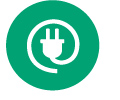
About Fujifilm
Best-in-class products from the industry’s leading manufacturers all backed by the reliability of Fujifilm. That’s what you can expect from FUJIFILM North America Graphic Systems Division
FUJIFILM Superia Printing Plates
Fujifilm has long been known for plate quality, and have plates for most applications like: conventional, CTP, newspaper, as well as industry leading lo-chem or chemical free environmentally sound plates.

A market leading choice of plates and plate technologies
Fujifilm’s philosophy is to offer a choice of plate technologies to match particular requirements. Our industry-leading range of CTP plates, probably used by more printers around the world than any other range, includes both thermal and violet sensitive plates, in processless, low chemistry or processed variants, all with the same high quality and productivity benefits. Whatever the CTP application, there’s a plate that’s designed to suit.
Fujifilm’s aim is to deliver high quality plates that make a difference to your business in the following ways:
- Are consistently of the highest quality
- Use less chemistry and water
- Require less processor maintenance
- Allow you to achieve maximum productivity
- Optimize ink / water balance on press
- Help you reduce your environmental impact
FUJIFILM Superia Plate Lineup
Superia ZX
Fujifilm SUPERIA ZX is a processless thermal plate that utilizes 4 new breakthrough technologies pioneered by Fujifilm that provide speed and stability while improving press utilization to reduce startup and makeready waste.
Superia LH-PJ
Fujifilm’s LH-PJ plate is designed to work with a revolutionary intelligent “ZAC” enabled processing technology, which greatly improves plate production speed and consistency and eliminates overreplenishment in controlling process activity. With the FLH-Z processor, LH-PJ plates are always processed under optimal conditions.
Fujifilm is committed to continuous improvement in helping increase prepress and press productivity and the SUPERIA LH-PJ plate is built upon the tradition of excellence Fujifilm has established over many years in producing plates for the graphic arts industry.
Superia LH-PL
The Superia LH-PL plate boasts the same features and printing characteristics as the renowned LH-PJ plate, with the added capability of extended run lengths (up to 600,000 impressions) without baking. This plate is also processed through the same FLH-Z processor and with the same chemicals used with the Superia LH-PJ medium run plate, giving you the added flexibility of changing plates without changing developer.
The SUPERIA LH-PL employs a double-coated photosensitive layer, which delivers enhanced run lengths compared with other no-bake CTP plates.
Superia Ecomaxx-V
Ecomaxx-VN is a digital plate designed for high quality offset Newspaper production printing in a CTP workflow utilizing a ≥30mw violet laser. An example of such a device would be the ECRM Newsmatic.

Material savings
Generally, paper and ink account for the greatest ratio of printing costs. Reducing these key materials is the first step in reducing costs. Among the different areas of resource savings, lowering the cost of paper and ink will lead to the clearest benefits in terms of increased profits.

Man-hour savings
Shortening working time and reducing production workload will reduce the number of people and working hours required for each process. Time that is saved can be assigned to other tasks, and shorter processes help enable quick turnaround times and increase capacity to handle more jobs.

Energy Savings
Regardless of national and regional differences, the second highest ratio of printing costs after paper and ink is accounted for by fees for utilities such as electricity and gas. Conservation of energy is therefore an important factor in reducing costs and boosting profits.

Reduced emissions
Avoiding the discharge of chemical waste liquids and exhaust gases not only helps protect the environment, but can also indirectly reduce costs.

Water savings
Water charges vary depending on the country and region, so the extent of cost reductions may differ, however reduced water usage lowers cost and reduces associated drainage processing costs.
